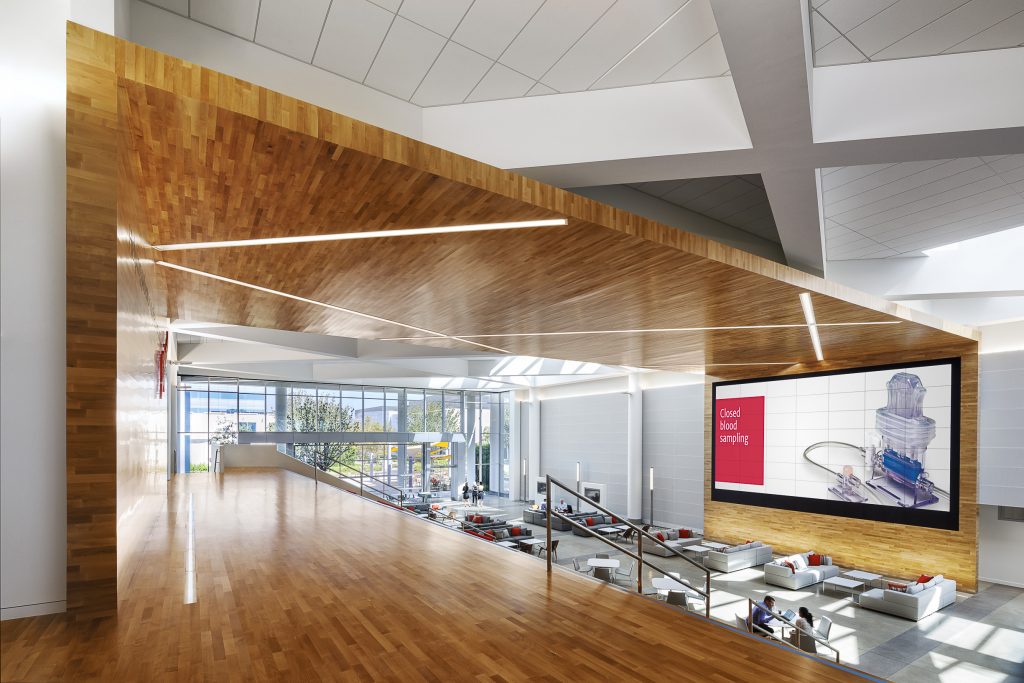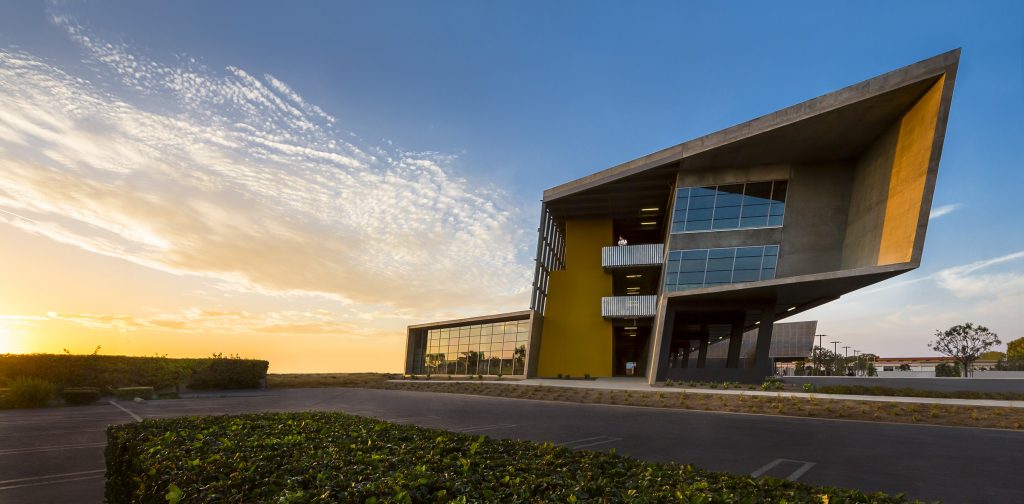Q: Why do you love designing buildings?
A: There are many layers to designing buildings and one where I am allowed to shape people’s lives is important to me. By creating spaces that both serve and engage the community, people lives are enhanced and better for it. And I like doing that.

Q: What are the technologies used in commercial property design to reduce energy waste?
A: Buildings nowadays can be net zero, where more energy is generated than consumed. The energy saving technology people look to the most is solar and a fairly common retrofit in new designs. Another way to conserve energy is through natural ventilation. Here in Southern California with our nice weather, more and more designs create open style buildings. Operable windows that open to the outdoors allow fresh air into the workplace, reducing the use of air conditioning. Even walls can fall away with manual or motorized retractable walls to open up maybe into a garden or any type of outdoor space.
Q: Are there regulations that call for reducing energy waste?
A: Californians specifically have been very vocal, adamant and decisive in passing laws that create sustainable environments such as for community colleges and all newly designed buildings. There are certain levels of standards with a LEED rating system that helps buildings perform a lot better by either producing energy, or designing the building to consume less energy. This includes energy efficient HVAC system, LED lighting, natural ventilation, and even trombe walls to utilize renewable energy. Positioning a wall south and west, the trombe walls absorb the heat to protect the space from warming up. Then the wall reradiates the heat back into the space during the coolness of the night.
Q: Do builders have incentives to go renewable?
A: Actually energy companies have banded together to create incentives for builders. Savings By Design (SBD) is a nonresidential new construction energy efficiency program here in California. It is managed statewide and funded by utility customers through surcharges applied to gas and electric services. Design assistance, various owner incentives, design team incentives and resources for energy design are all part of the service and help the industry construct with energy efficiency in mind. It actually rewards the clients and the design team based on performance that exceeds a base standard. When they meet certain goals, the incentives kick in.
Q: What challenges do you encounter when designing for sustainability?
A: The reality is every project has a limited budget and costs for renewable designs; those are the biggest challenge we face. What I’ve learned is to first find the common goal from all involved in the project – clients, builders and end users – in terms of sustainability to create the most effective solution. Educating clients about how and why all the measures we put into the design is meant for the lifetime of the building to last 50-100 years brings a different mentality to the table. We help them understand through virtual models and energy analysis reports; sew it together with every move we make from budget, to climate, to the use of the building; and factor in the demographics and culture within the city. Using all these tools helps us explain the goals we want to achieve together.

Q: What do you see as a stumbling block to bringing renewable energy to buildings?
A: Technology has gained a lot of ground within the past five to 10 years and continues growing with a positive momentum. There are still plenty of hurdles. Renewable energy technologies are still relatively new where many harbor doubts on its cost effectiveness and return on investment over time. To be clear, when we talk renewable, no matter what type it is, know there will always be investment up front. And while pondering whether to make the investment, money is still being spent and nothing saved. Solar technology has come a long way and now generates a lot more power with smaller panels than 10 years ago.
Q: Any cool energy-saving technology showing up more in building designs?
A: Translucent solar panels. Imagine a pavilion in a park, a carport, or a main entry to a building. Typically they have a canopy that frames over the space. With translucent solar panels, you can have light filter through it to produce daylight without direct sunlight. It harnesses the energy of the sun and can power whatever is attached to it. Nice thing about the panels, they are double-sided and are sensitive enough to pick up light reflected off the pavement or any other reflective medium to convert into usable energy. As with all solar panels, they are becoming more nimble and smaller for use in a variety of designs.
Q: What is the future in technology for commercial buildings?
A: It is already happening in residential projects where homes have become so much smarter where everything is at your fingertips through a smartphone. You can literally run appliances, lighting and other electronics while you are working. Next phase is to scale it up and apply it to commercial buildings. Some of the smart technology is already making its way to offices and educational environments. It will take some time to completely implement the technology into an entire building. A lot has to do with the economy of scale and making it cost effective with larger projects.
CONTACT INFO
Ozzie Tapia, Associate / Project Designer
LPA
5161 California Avenue, Suite 100
Irvine 949.261-1001
lpa@lpainc.com
By Gina Dostler



